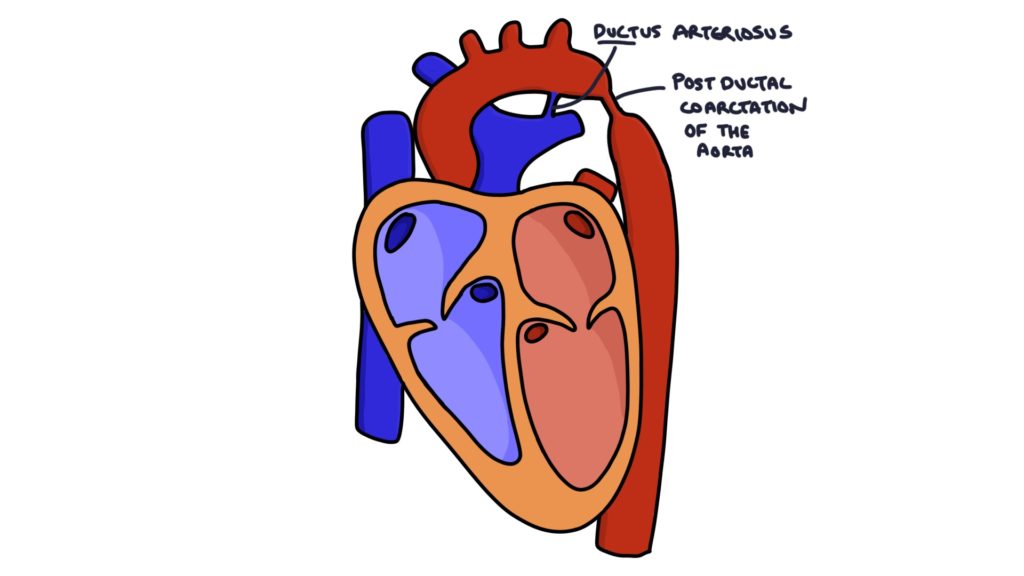Coarctation of the aorta is a congenital condition where there is narrowing of the aortic arch, usually around the ductus arteriosus. The severity of the coarctation (or narrowing) can vary from mild to severe. It is often associated with an underlying genetic condition, particularly Turners syndrome.
Narrowing of the aorta reduces the pressure of blood flowing to the arteries that are distal to the narrowing. It increases the pressure in areas proximal to the narrowing, such as the heart and the first three branches of the aorta.

Presentation
Often the only indication of coarctation in a neonate may be weak femoral pulses. Performing a four limb blood pressure will reveal high blood pressure in the limbs supplied from arteries that come before the narrowing, and lower blood pressure in limbs that come after the narrowing. There may be a systolic murmur heard below the left clavicle (left infraclavicular area) and below the left scapula. Coarctation may have other signs in infancy:
- Tachypnoea and increased work of breathing
- Poor feeding
- Grey and floppy baby
Additional signs may develop over time:
- Left ventricular heave due to left ventricular hypertrophy
- Underdeveloped left arm where there is reduced flow to the left subclavian artery
- Underdevelopment of the legs
Management
The severity of the coarctation varies between patients. In mild cases patients can live symptom free until adulthood without requiring surgical input, and in severe cases patients will require emergency surgery shortly after birth.
In cases of critical coarctation where there is a risk of heart failure and death shortly after birth Prostaglandin E is used keep the ductus arteriosus open while waiting for surgery. This allows some blood flow flow through the ductus arteriosus into the systemic circulation distal to the coarctation. Surgery is then performed to correct the coarctation and to ligate the ductus arteriosus.
Last updated July 2019
